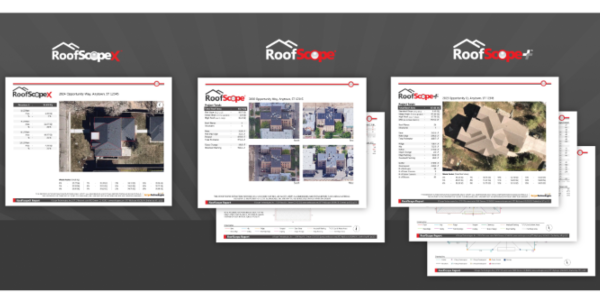Operational Excellence and the Future of Your Business

By John Kenney, Cotney Consulting Group.
Integrating operational excellence philosophies into your company can lead to growth and higher profits.
2022 brings an excellent opportunity to assess your business and look to the future. Does it take a chaotic event for you to realize it is time to make significant changes, to put a set of principles in place to get you organized, reduce your risk and improve your cross-functional management?
Or do you simply take stock and realize now is the time?
Consider the operational excellence philosophy, which embraces problem-solving and leadership to achieve continuous improvement. This philosophy is not a set of activities to perform. It is a mindset that should be present within you and all of your employees.
Use key concepts of operational excellence to give your company a substantial competitive advantage. It can start with minor process improvements that can have an enormous impact. The Harvard Business Review notes that companies with peak operational excellence typically have 25% higher growth and 75% higher productivity than those that do not follow the philosophy.
The secret to operational excellence is that it helps you succeed by impacting key characteristics of behavior within your organization.
Consider these concepts
Workforce
You create a robust organizational culture by empowering your employees to solve problems. This helps you hire and maintain a staff of team members who are more willing to consider new ideas and feel comfortable bringing new ideas to management.
Strategic
With operational excellence, there is no need for management to get involved in solving low-level problems or micro-managing daily operations. Instead, leaders can spend their time focusing on the big picture — growing the business and fending off threats. The rest of the team can handle those low-level problems and manage daily operations.
Agile
Operational excellence is flexible and dynamic. As markets change or customer tastes change, you will have a self-correcting mechanism to meet customer needs and continue growing your business.
Growth
Use standardized processes and continually improve them. Optimize every aspect of your operation and implement best practices. With that accomplished, training new staff is easy.
Efficient
Achieve efficient operations using value streams that cut waste. Deliver value to your customers at the best price and quality. This leads to greater profitability.
Three most popular methodologies
There are three principal methodologies businesses tend to use to achieve operational excellence. Training is available for all three. Here is a snapshot:
1 - Six Sigma
Six Sigma uses tools and techniques to improve your business processes to achieve better products or services. The goal is to improve the customer experience by identifying and eliminating variations. More than 50% of Fortune 500 companies use Six Sigma, helping them save more than $427 billion over the past 20 years. A defect is anything that fails to meet customer expectations, and with Six Sigma, no more than 3.4 defects are found for every million opportunities.
Six Sigma has five steps: define, measure, analysis, improvement and control. Define a problem so you can fix it. Once you determine the problem, create a plan and evaluate your available resources. Measure your available data and assess your current process.
Analyze your measured data to get to the root of the problem. Then look for possible improvements or solutions. Implement the solutions on a small scale to ensure the process remains effective.
2 - Kaizen
Kaizen, in Japanese, means “continuous improvement.” Businesses use it to implement ongoing, positive changes. Its guiding principles are that a good process leads to positive results, teamwork is essential for success, and you can improve any process.
Implement Kaizen to help create a culture of continuous improvement. This leads to employees working together to achieve workplace improvements. When applied consistently, small changes compound and produce significant results. Kaizen does not just encourage small change but real change with the participation of all employees.
This methodology stresses that it is not enough to make a change once and hope it works. It is about continuous improvement. Kaizen can help improve employee productivity, improve customer experience and cut costs.
3 - Lean Manufacturing
This methodology focuses on eliminating waste in a production system. The philosophy is that businesses should focus only on that which adds value. Every process has a bottleneck; concentrating on that bottleneck is the fastest route to success.
Lean manufacturing focuses on improving the quality of products or services and eliminating anything that does not add value. It identifies seven areas of waste called the “seven deadly wastes.” They include overproduction, waiting, transport, motion, over-processing, inventory and defects.
Use one of these methodologies to focus on growth and execute the strategies better than your competitors. Ensure employees whether or not all systems are running smoothly and allow team members to adjust for improvement when necessary.
Executional excellence, or the drive to keep improving to have the capacity to pursue innovation and growth, has two primary pillars:
- An empowered staff with a clear understanding of your goals and plans will devise ways to fix problems.
- Systematic operations management leads to a positive culture focusing on your customers’ needs.
Businesses practicing operational and execution excellence must see the concepts as a culture that imbues everything they do. Lead your company to deliver your products and services when your customers desire them, with the slightest effort and at a price the customer wants to pay.
Learn more about Cotney Consulting Group in their RoofersCoffeeShop® Directory or visit www.cotneyconsulting.com.
About John Kenney
John Kenney is the Chief Executive Officer at Cotney Consulting Group. Prior to starting Cotney, John had 45 years of experience in the construction industry. John began his career by working as a roofing apprentice at a family business in the Northeast. Because of his skill and hard work, he progressed from roofing laborer to foreman, estimator, chief estimator, Vice President, and Chief Operating Officer with his various companies. John has worked for multiple Top 100 Roofing Contractors and is intimately familiar with all aspects of roofing production, estimating, and operations. In his last role, John was responsible for the daily operations and performance of a large commercial roofing contractor. During his tenure, John ran business units associated with delivering excellent workmanship and unparalleled customer service while ensuring healthy net profits for his company.



-2025-xtv-mls-tour-2.png)

















Comments
Leave a Reply
Have an account? Login to leave a comment!
Sign In